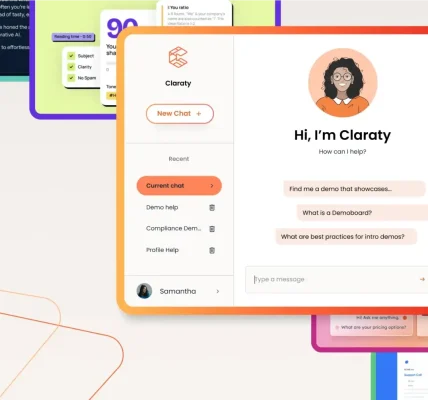Let’s be honest. The early days of a SaaS startup are a beautiful mess. The sales process, if you can even call it that, is often a patchwork of hustle, gut feelings, and heroic efforts. It works… until it doesn’t. You hit a growth ceiling, deals stall, and your team is running in circles.
That’s where optimization comes in. It’s not about adding more complexity. It’s about streamlining the engine of your business so it runs smoother, faster, and more predictably. Think of it as turning a rickety go-kart into a finely-tuned race car. You’re not changing the destination, just making the journey infinitely more efficient.
Why Bother? The Real Cost of a Scrappy Sales Process
Sure, that “scrappy” approach got you your first few customers. But as you scale, the cracks begin to show. A leaky sales funnel is a silent killer. You’re wasting precious resources—time, money, and morale—on leads that go nowhere.
An unoptimized process means your Customer Acquisition Cost (CAC) skyrockets while your Customer Lifetime Value (LTV) struggles to keep up. It creates a frantic, reactive environment where your team is always fighting fires instead of strategically building relationships. Frankly, it’s exhausting.
Mapping Your Current Reality: The Foundation of Optimization
You can’t fix what you don’t understand. The very first step is to map your entire sales process from end to end. Every single touchpoint. I mean it—get a whiteboard (or a Miro board) and map it out visually.
Where do leads come from? What happens when they request a demo? How many follow-up emails are sent? What does the handoff to customer success look like? You’ll be surprised at the inconsistencies and bottlenecks you find. This isn’t about blame; it’s about creating a baseline. A shared reality for your entire team to improve upon.
Key Metrics to Track Relentlessly
Data is your compass. Without it, you’re just guessing. Focus on these core SaaS sales metrics to see what’s actually happening:
- Lead-to-Opportunity Conversion Rate: How good are you at qualifying inbound interest?
- Opportunity-to-Win Rate: What percentage of your demos actually turn into paying customers?
- Sales Cycle Length: How many days does it take to close a deal? And why does it vary?
- Average Contract Value (ACV): Is it trending up or down?
Tracking these numbers gives you the “what.” The next step is uncovering the “why.”
Building a Stage-Gated, Not Age-Gated, Sales Process
A common mistake is defining stages by time—”Week 1: Send follow-up.” That’s an age-gated process. Instead, build a stage-gated process. Each stage has a clear goal and specific exit criteria that must be met before a deal can move forward.
| Stage | Goal | Exit Criteria (What “Done” Looks Like) |
| 1. Qualification | Identify fit | BANT (or similar) framework completed; key pain confirmed. |
| 2. Discovery | Deeply understand need | Stakeholders mapped; business impact quantified. |
| 3>Demo/Presentation | Showcase value | Specific use case demonstrated with a clear next step agreed upon. |
| 4. Proposal & Negotiation | Close the deal | Contract sent, terms reviewed, final objections handled. |
This structure eliminates ambiguity. A rep can’t just say a deal is “80% likely to close.” They have to show that the specific criteria for the “Proposal” stage have been met. It forces discipline and creates a common language for your sales team.
Leveraging Tech Without Drowning in It
The SaaS landscape is flooded with tools promising to revolutionize your sales. The key is to choose a lean tech stack that enhances, not complicates, your process.
- CRM (HubSpot CRM, Salesforce): This is your single source of truth. Non-negotiable.
- Sales Engagement (Outreach, Salesloft): For automating and personalizing outreach sequences.
- Conversation Intelligence (Gong, Chorus): This is a game-changer. It records and transcribes sales calls, giving you unparalleled insight into what’s actually working in conversations.
- Calendaring Tool (Calendly, Chili Piper): Reduce the back-and-forth and let prospects book meetings instantly.
But a word of caution: a tool is only as good as the process it supports. Don’t use a fancy CRM to automate a broken process—you’ll just break things faster.
The Human Touch: Aligning Sales and Marketing (For Real This Time)
We talk about smarketing until we’re blue in the face, but in practice, it often falls apart. The biggest lever for optimization here is a tight, feedback-driven loop between the teams.
Your sales team is on the front lines. They hear the objections, the misconceptions, the exact words prospects use to describe their pain. This isn’t just anecdotal data—it’s pure gold for your content and product marketing teams.
Is there a common objection that comes up in every third demo? That’s not a sales problem; it’s a marketing opportunity. Create a blog post, a video, or a case study that directly addresses it before the prospect even gets on a call. This is how you build a seamless customer journey and dramatically increase conversion rates.
Iterate, Iterate, Iterate: Optimization is a Verb
Here’s the deal: your first optimized sales process won’t be perfect. And that’s the point. Optimization isn’t a one-time project you check off a list. It’s a continuous cycle of measurement, analysis, and refinement.
Hold regular pipeline reviews. Not to micromanage, but to diagnose. Why did we lose that deal we thought was a sure thing? Why did this one close so fast? Use tools like Gong to find patterns in winning conversations. A/B test your email templates. Small, consistent tweaks compound into massive gains over time.
It’s a rhythm, not a revolution. You’re building a learning organization, one that gets smarter with every single customer interaction.
Ultimately, a well-oiled sales process isn’t about rigidly following a script. It’s about creating a framework that empowers your team to do their best work. It frees them from administrative chaos and lets them focus on what they do best: building relationships and solving customer problems. And that, you know, is the whole point.






